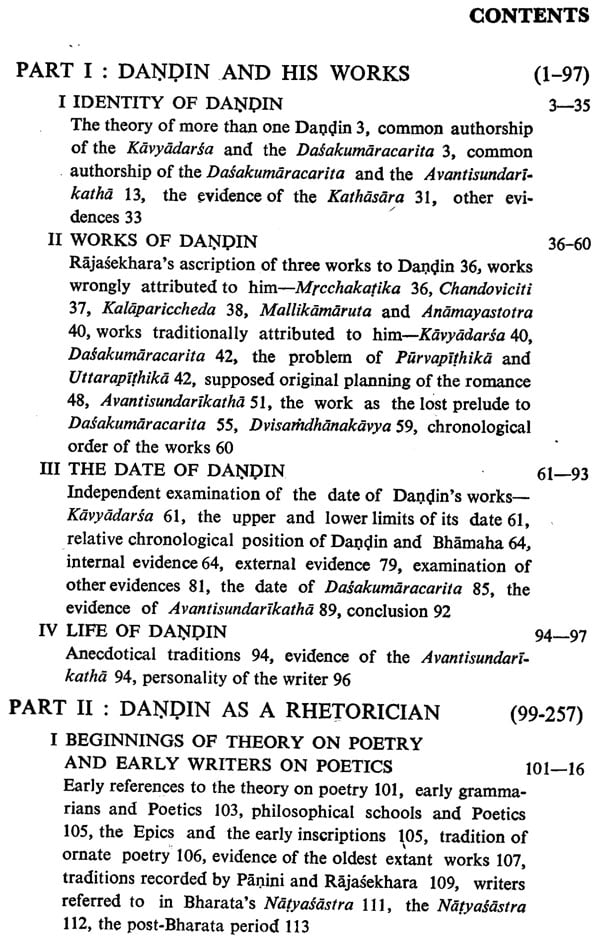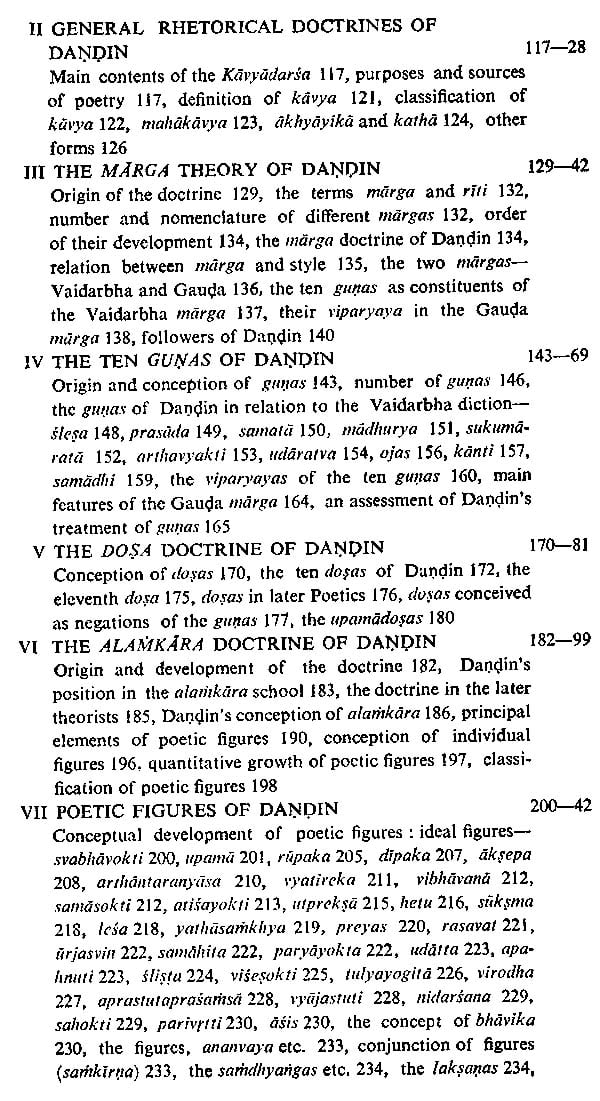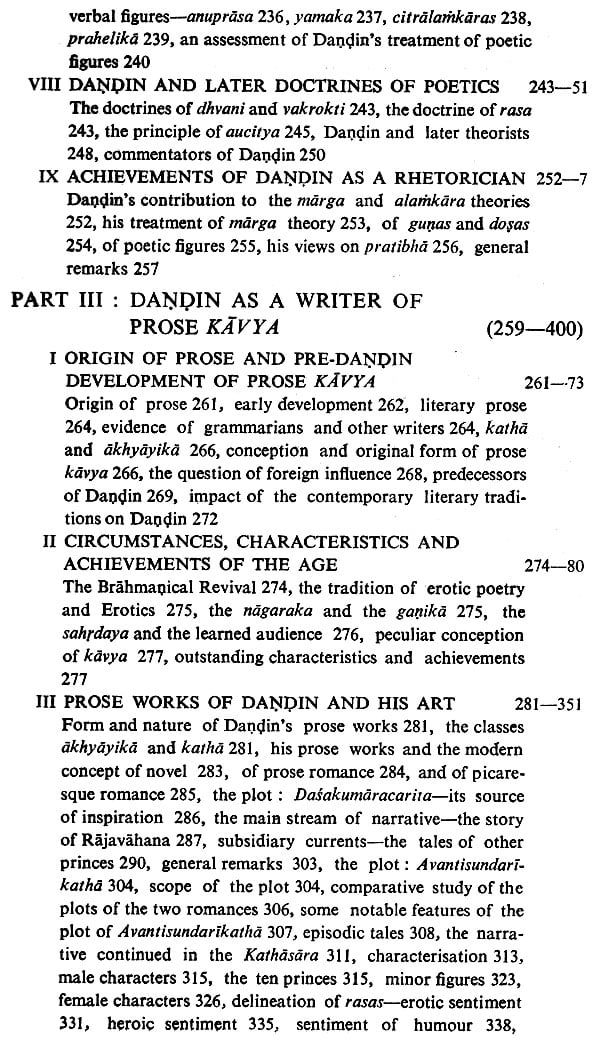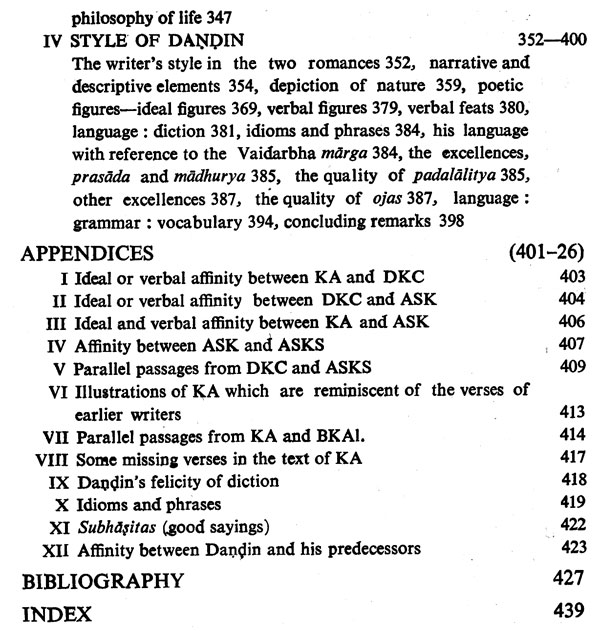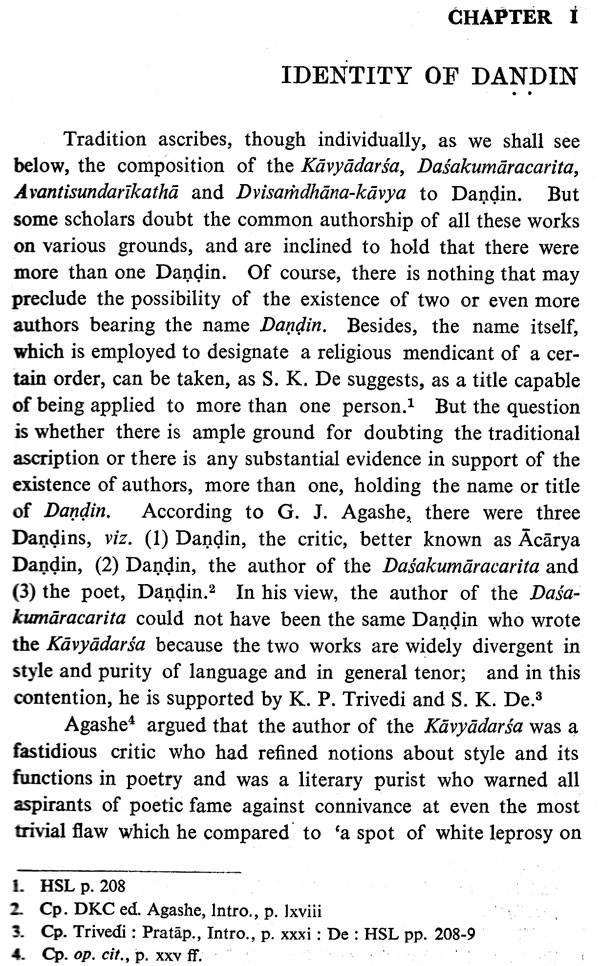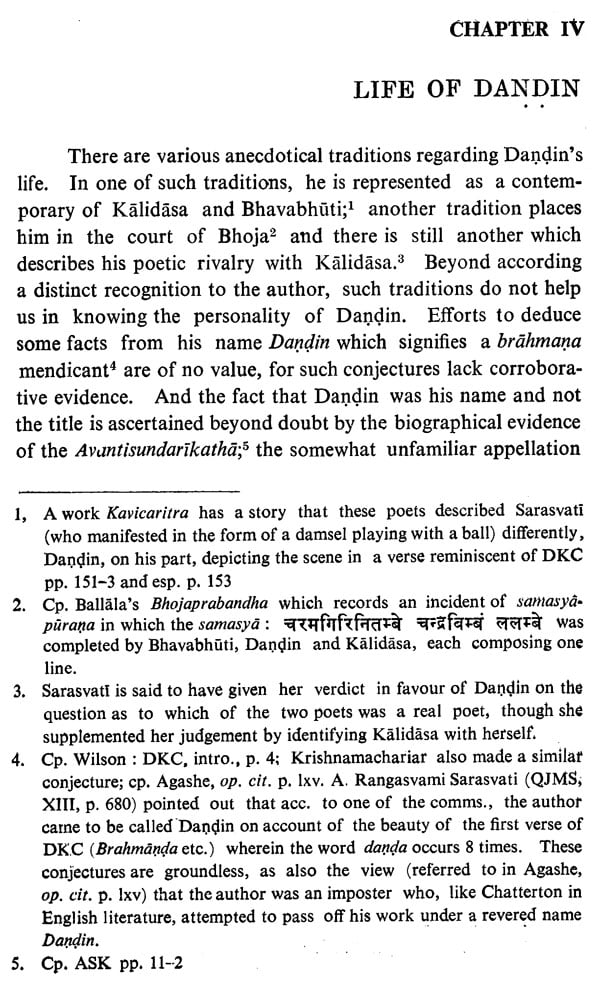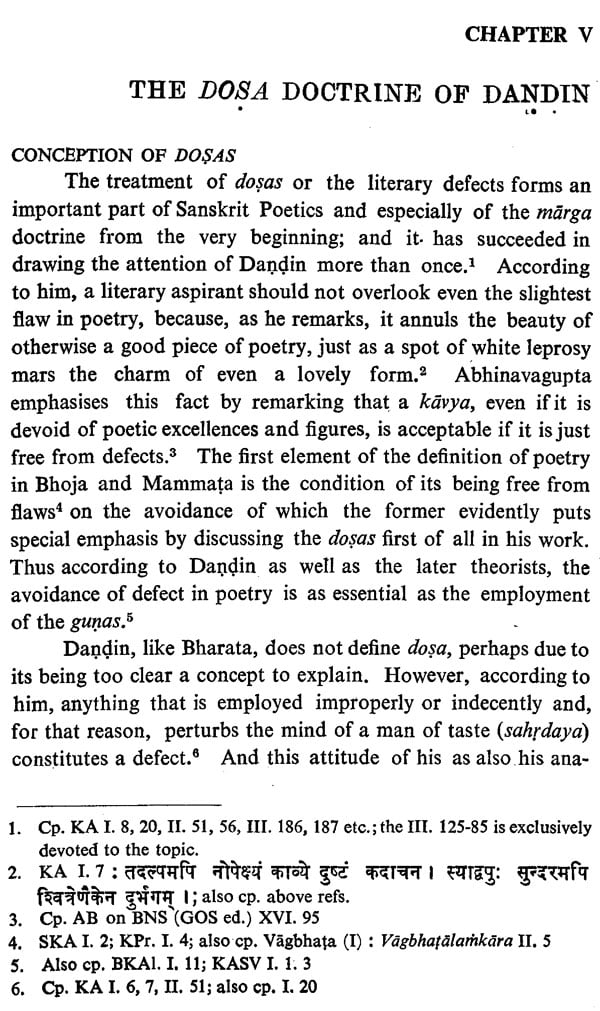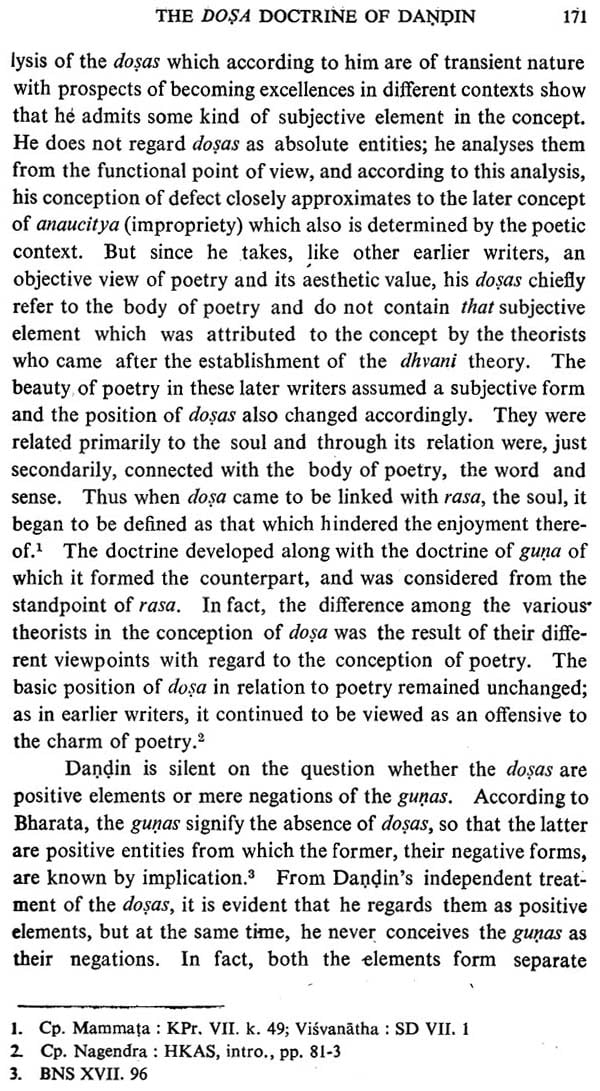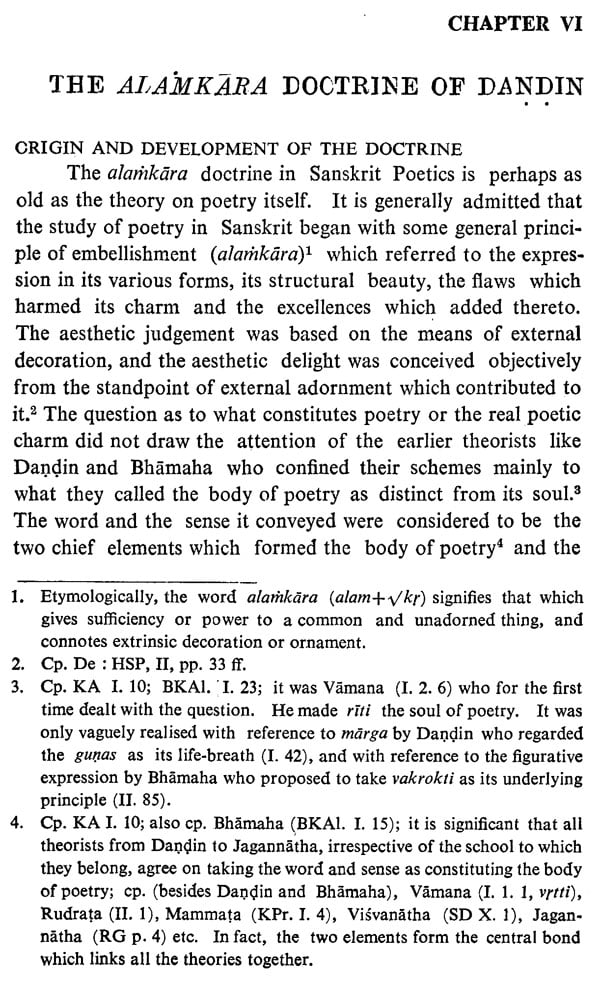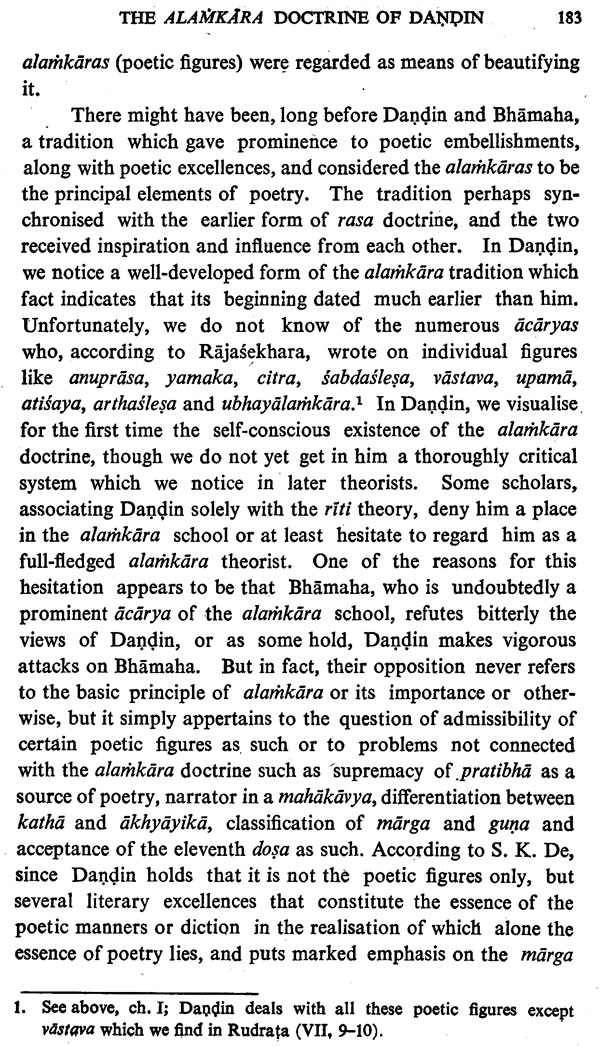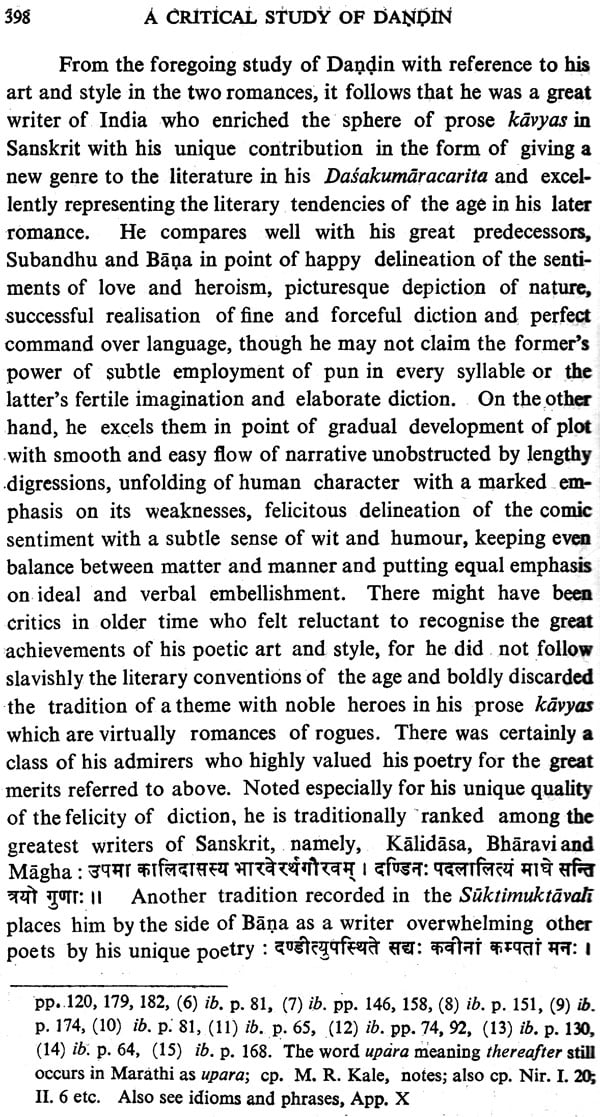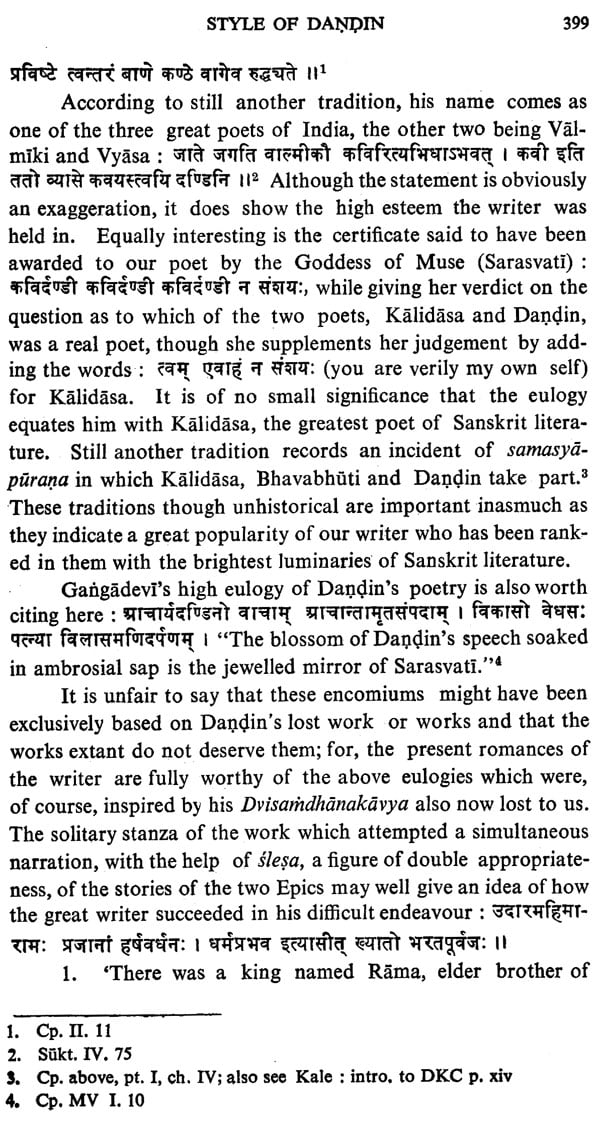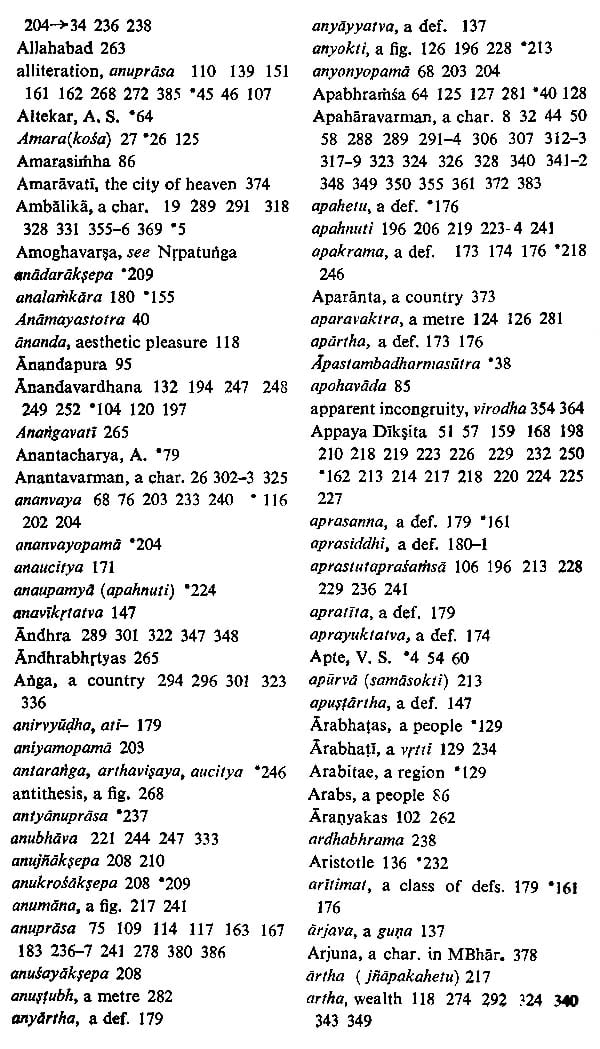
A Critical Study of Dandin and His Works (An Old and Rare Book)
Book Specification
| Item Code: | NAR366 |
| Author: | Dharmendra Kumar Gupta M.A., M.O.l, Ph.D. |
| Publisher: | Meharchand Lakshmandas Publications |
| Language: | English |
| Edition: | 1970 |
| Pages: | 494 |
| Cover: | HARDCOVER |
| Other Details | 9.00 X 5.50 inch |
| Weight | 560 gm |
Book Description
The Sanskrit literature occupies a prominent place in the classical literatures of the world by virtue of its great antiquity, amazing magnitude, vast expansion, luxuriant development of various literary forms, and a comprehensive range which it amply commands. The fact that it richly reflects our ancient culture and civilisation in their manifold aspects, and enables us to have a glimpse into our past also enhances its value for us, while its intrinsic qualities of literary charm and artistic beauty and stylistic finish are undoubtedly unique. This great literature climbs the apex of its glory in the Gupta period (from the 4th century to the middle of the 6th century A. D.), the Golden Age of Indian History, and in the following cen-turies which visualised, besides the great religious and cultural revival, an august literary renaissance in the works of Kalidasa and Bharavi in the field of poetry, of Visakhadatta, Harsa and Bhavabhuti together with those of Kalidasa in the sphere of drama and of Subandhu, Bana and Dandin in the arena of prose kavya, in addition to those of Susruta, Aryabhata and Varahamihira in the field of scientific literature. Among these bright luminaries of Classical Sanskrit literature, Dandin occu-pies an important place both as a writer of prose romances and as a poetician.
Despite the important position the writer holds in Sanskrit literature, no attempt worth the name has so far been made to study in detail his life and works in all their aspects. Of course, some efforts have been made, through research journals and general books on history of Classical Sanskrit literature, to solve some of the problems relating to his writings or his period or to the geographical or historical data of the Dasakumara-carita, but while we are far from satisfactory or generally accept-able solutions of the outstanding problems in these sporadic studies, no literary or cultural study of his work or works has been attempted so far. And consequently, while on one hand the problems of the identity of the authors of the works traditionally ascribed to him, his authorship of the books hypothetically attributed to him and the age to which he belonged are still open questions, on the other, the literary and cultural value of his works remains almost unassessed. In the field of prose kavya, his achievements are unjustifiably underestimated in comparison with Subandhu and Bana who though more successful than Dandin in representing the literary aspirations of the contemporary age fall below him in presenting life in all its varied aspects of general application, and making thereby a universal appeal. In the sphere of Poetics, his contributions are not fully recognised, simply because he is an early writer in whom the poetical theories allegedly appear in their primitive form. No doubt the chief doctrines of Sanskrit Poetics were established with greater scientific acumen and detail in the later period, but we cannot possibly deny the historical importance which the theories appearing in rudimentary form in the comparatively early writers possess inasmuch as they throw light on many of the concepts of Poetics in the 'making, on the back-ground of which we are able to trace their development in the subsequent writers. It may also be said that many of the poetical theories, particularly the views on the difference bet-ween katha and akhyayika, the margas and their constituent gunas, and the conception of individual poetic figures which appear in Dandin, sustain their doctrinal value even in the later period of consummate rhetorical studies. Equally important is the cultural study of the writer's works which, like Bana's writings, present a pervasive view of the culture and civilisation of India of that age.
The present work which is a part of my thesis approved for the Degree of Ph. D. by the Panjab University, Chandigarh, attempts a study of the literary aspect of the works of the writer, giving a critical assessment of his contribution to the study of Poetics and to the Classical Sanskrit prose. The study dealing with the social and cultural aspect of the works of the writer has been envisaged for a separate work under the title Society and Culture in the Time of Dandin, to follow the present volume.
**Contents and Sample Pages**
